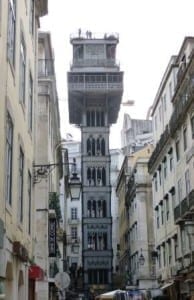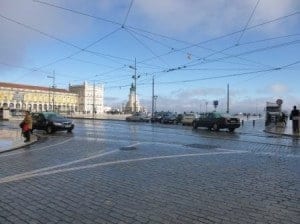I’m Pippa and I’m more than a little excited to have joined the Nomadic Travel team.
Just before I started work in March, I nipped off for a short break to Lisbon. An old school friend of mine lives in Cambridge and travelled from Stansted to meet me there, whilst I took a flight from Bristol.
One of the world’s oldest cities, Lisbon is full of history. Our favourite part of the city was Alfama, the Moorish region with its maze of steep cobbled streets, where we got happily lost. The Moorish influence is all over Lisbon with the buildings covered in beautiful tiles. (I can highly recommend a visit to the city’s Tile Museum ).

We walked a lot, stopping at the tiny hole-in-the-wall ‘Ginjinha’ bars for the occasional shot of traditional cherry brandy (which is typically drunk standing on the street whilst passing the time of day with the locals. Though I don’t speak a word of Portuguese, and they not a word of English, we got on very well!)
We took tram 28 simply for the experience of rattling up and down the steep gradients of the narrow streets, just scraping by the tiled frontages of apartment buildings, and creaking and winding round sharp corners. The city also has a good network of safe, clean metros and cheap taxis. If you would rather walk less, you can buy a day ticket for 6 Euros that allows unlimited use of all trams, metro, lifts and buses.
The Santa Justa lift is a must-see. This iron construction (along with several other lifts and funiculares) was built to overcome some of the problems transporting goods by horse and cart up Lisbon’s many hills. The structure – like a mini Eiffel Tower stands incongruously in the shopping streets of Baixa, the low town, and links to Chiado, the main shopping region of the city. At the top is a viewing platform giving some fantastic views over the red roofs and out to the bay.
It’s worth climbing up to the castle too. With crenellations, high stone walls, cannons and peacocks to boot, this did not disappoint and afforded more wonderful views over the city, but we definitely felt we had earned our lunch at the cafe. I was a little disappointed to find the Camera Obscura was closed for maintenance. Having visited the ones in Bristol, Greenwich and Havana, I make a point of seeing these quirky optical devices where I can.
‘Fado’ is another must in Lisbon. This melancholic music of the woes of life is sung by a soloist, usually accompanied by guitar. We listened to Fado in various bars in Alfama. Beware though, that if you have just ordered your food, you will have to watch it go cold while the singing takes place. It is the height of rudeness to eat, talk, or do anything but listen.



